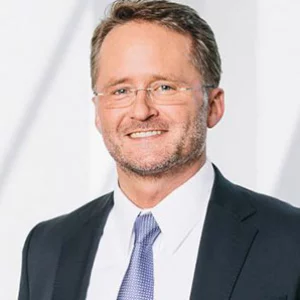Growth is difficult, especially in a slowing economy, and sometimes M&A can offer a solution . Although few M&A deals wind up creating value, CEOs with a proven ability to transform an organization and improve performance in difficult conditions can create massive value by picking up a troubled business or brand—often at a discount. It’s a bold idea: buying distressed assets, turning them around, and integrating them to produce a company that is much stronger than the sum of its parts.
BCG recently analyzed 1,400 M&A-based turnarounds between 2005 and 2018 and found that the TSR of winning deals was 25 percentage points higher than that of unsuccessful deals. And we identified five factors that can increase the ability of bold CEOs to succeed with such turnarounds:
1. Willingness to Act Quickly. The single biggest factor in a turnaround deal’s success is a willingness to take bold and rapid action. Buyers that launched a turnaround in the first year after a deal closed generated 12 percentage points more in TSR than those that waited until later. Engaging quickly generates momentum and frees up capital, both of which can spur longer-term initiatives. Early action also helps boost investors’ confidence, which is a key factor in turnaround success. Successful CEOs treat speed as their friend.
2. Ambitious Synergy Targets. Leaders need to aim high, with ambitious synergy targets factoring in both increased revenue and reduced costs. These should be stretch goals that look at the “full potential” of the turnaround: improvements to the acquired company, improvements to the buyer, and synergies from combining the two. (See the exhibit.) CEOs who set ambitious targets, announced them externally, and reported on progress generated higher TSR in the years following the close of an acquisition.
3. Sufficient Investment in Transformation. Turnaround programs cost money—to close plants, restructure business units, or repair assets that have become obsolete. Rather than treating these as expenses and dragging the program out over a long period of time, successful leadership teams treat them as investments (often as restructuring charges), and companies that invested more and moved faster than the average for their industry performed better over time.
4. A Long-Term Orientation. CEOs who are integrating a troubled business need to consider the short term and make tactical and operational moves that will generate the necessary funding. But those who can balance this short-term perspective with a long-term strategic orientation show better financial returns over time. These leaders do not get so caught up in daily crises that they miss emerging opportunities. They invest more in digital and R&D and less in capital improvements, and their long-term orientation allows them to improve their strategic positioning.
5. A Well-Defined Purpose. A growing body of BCG research shows that companies with goals and aspirations that go beyond profits perform better over time . The same principle applies to M&A turnarounds. Acquiring companies that spell out a common purpose can motivate and align employees around long-term goals. Leadership teams and employees will push themselves hard on a turnaround program if they see the long-term objective.
While each of these five factors on its own can improve the results of an M&A turnaround, a combination of two or more is even more powerful. In fact, there is a direct correlation between the number of factors that a company takes into account and the boost in three-year TSR from the deal.
The following three case studies show what successful M&A turnarounds look like in practice.
Automotive: Groupe PSA
Automaker Opel had long underperformed its peers, losing about $1.1 billion annually starting in 1999. In 2017, the company was bought by Groupe PSA, the parent company of Peugeot, Citroën, Vauxhall Motors, and DS Automobiles. Groupe PSA had launched a highly successful turnaround program of its own in 2014, leading to a strong rebound in profitability and market cap. Now it wanted to build on that momentum and the operational and strategic improvements it had made by turning around newly acquired Opel.
The deal closed in August 2017, and Groupe PSA immediately began making changes. It thinned the ranks of upper management at Opel by about 25%. It also reached a deal with labor unions to eliminate 3,700 jobs through buyouts and reduce the standard workweek from 40 hours to 35, leading to a significant drop in labor costs. Finally, it reduced fixed costs by 27% in marketing and other areas.
The turnaround also focused on streamlining production, which was unnecessarily complex because of a large number of models and options. For instance, one basic hatchback model had 57 infotainment systems for customers to choose from. To simplify, Opel reduced the number of car platforms—the basic chassis—from nine to just two. It also scaled back the number of engine groups from ten to four. And those 57 infotainment options were cut back to a reasonable ten.
Turnarounds in asset-heavy industries like automotive typically take years to generate results, but the program at Opel began doing so almost immediately.
Turnarounds in asset-heavy industries like automotive typically take years to generate results, but the program at Opel began doing so almost immediately. The company lost roughly $200 million in the second half of 2017, a period that included its first five months under Groupe PSA’s ownership. But by the first half of 2018, it had already returned to black ink, posting positive earnings of $583 million. In 2018 overall, it earned $960 million—the highest revenues in the company’s 157-year history. Opel now has profit margins of about 5%, on par with those of Volkswagen.
Groupe PSA’s acquisition and transformation of Opel—coming on the heels of its own earlier transformation—have refurbished a storied brand and helped the company regain its position as one of the top-performing automakers in the world.
Biopharmaceuticals: Sanofi
In 2009, French pharmaceutical company Sanofi was in acquisition mode. Many of its products were losing patent protection, and the company wanted to shift from traditional drugs into biologics. One potential target was Genzyme.
From 2000 through 2010, Genzyme had grown rapidly, but manufacturing issues at two of its facilities had halted production and led to a shortage of key drugs in its portfolio. Sales plunged, the US Food and Drug Administration issued fines, and investors called for management changes. But many features of the company still met Sanofi’s needs, including a lucrative orphan drug business with no patent cliff and a strong history of innovation. Sanofi made an offer: $20 billion or $74 per share, which was roughly Genzyme’s value before the manufacturing problems hit.
Sanofi’s integration of Genzyme led to about $700 million in cost reductions through synergies.
Management laid out a bold ambition and moved fast. The company streamlined manufacturing, opening a new plant to reduce the drug shortage and simplifying operations to remove bottlenecks at existing plants. Next, it moved sales and marketing for some of Genzyme’s businesses, including oncology, biosurgery, and renal products, under the Sanofi brand. It also reduced the overall sales force by about 2,000 people.
Genzyme’s R&D pipeline was integrated into Sanofi, and a new portfolio review process led to the cessation of some studies and the reprioritizing of others. And about 30% of Genzyme’s cost base was reduced through the integration with Sanofi. Genzyme’s diagnostics unit was sold off, and about 8,000 full-time employees were eliminated in the EU and North America.
The moves generated positive results fast. Overall, the integration led to about $700 million in cost reductions through synergies. By 2011, the company was back in expansion mode with 5% revenue growth, increasing to 17% in 2012. Only about 13% of Sanofi’s revenue came from Genzyme products, but these were poised for strong growth, positioning Sanofi as a global leader in rare-disease therapeutics and spurring its evolution into a dominant player in biologics.
Industrial Equipment: Konecranes
Konecranes is a global provider of industrial and port cranes equipment and services. Several years ago, in the face of increased competition, Konecranes was struggling to cut costs or grow organically. In 2016, it bought a business unit from Terex Corporation called Material Handling & Port Solutions (MHPS), its principal competitor. The MHPS business included several brands that complemented Konecranes’ products and services, along with some sizable overlaps in technology and manufacturing networks.
Konecranes’ performance has earned praise from investors, leading to a share price increase of more than 50% since the acquisition was announced.
Before the deal closed, Konecranes drafted an ambitious full-potential plan to generate about $160 million in synergies within three years through cost reductions and new business. That represented a 70% improvement over the joint company’s pro forma financials. The turnaround plan encompassed all main businesses and functions across both legacy Konecranes and MHPS operations and included the following measures:
- Reducing procurement spending through increased volumes
- Consolidating service locations
- Aligning technological standards and platforms
- Closing some manufacturing sites
- Streamlining corporate functions
- Adopting more efficient processes
- Optimizing the go-to-market approach
- Identifying new avenues of growth
The full program consisted of 350 individual initiatives organized into nine major work streams and aligned with the overall organization structure to create clear accountabilities and tie the program’s impact directly to financial results. Still, many of the initiatives were complex by nature, so solid planning and rigorous program management and reporting have been critical.
Konecranes also carried out a holistic baseline survey to assess the cultures of the two organizations and define a joint target culture. An extensive cultural development and communications plan featured strongly in the early days of the integration.
The company has reported on its progress to investors as part of its quarterly earnings calls, and two years into the three-year plan, it has hit or exceeded its targets. That performance has earned praise from investors, leading to a share price increase of more than 50% since the acquisition was announced.
Turnarounds are tough, and those involving M&A are even harder. Yet there is also significant value to be had, provided CEOs understand the factors leading to success. As growth slows in many industries—and in the overall economy—companies that take these factors into account can give themselves the best odds of success. And at a time when other companies hunker down, they will be able to spot opportunities and pounce on them.











